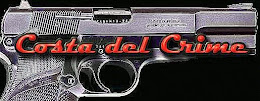Animosity between the RCMP and the Organized Crime Agency of B.C. led to the failure of a multimillion-dollar investigation into the Hells Angels, a former lead investigator with the agency has alleged in a wrongful dismissal suit.
The investigation, known as Project Phoenix, targeted several high-profile members of the Hells Angels biker gang, with agents working for the police buying and selling large quantities of drugs.
The investigation was completed and reports were sent to Crown counsel for charges.
However, no charges were ever laid, something Allen Dalstrom - the officer who led the investigation and is now suing for wrongful dismissal - blames on infighting between the RCMP and the organized crime-fighting agency.
Dalstrom was fired in 2004 after concerns were raised about his handling of Project Phoenix and over comments he allegedly made to a journalist writing a book about the Hells Angels.
However, in a statement of claim filed in B.C. Supreme Court, Dalstrom argued there were no grounds to fire him and that Phoenix was derailed because of RCMP jealousy over the creation of the organized crime-fighting agency in 1999.
"Certain members of the senior management of the RCMP in British Columbia were opposed to the creation of the OCABC from its inception because the OCABC was given the mandate to carry out investigations that had previously been within the mandate of the RCMP," Dalstrom alleged in his statement of claim.
"The RCMP in British Columbia sought to persuade the province to disband the OCABC and return the mandate for investigating organized crime to the RCMP."
Dalstrom alleged the RCMP attacked his handling of Phoenix "as a means of discrediting the management of the OCABC generally."
According to Dalstrom, a number of outside reviews of Project Phoenix concluded the case had been handled properly.
Documents filed by Dalstrom quote a 2003 independent review of Phoenix which states: "The multimillion-dollar Phoenix investigation could have been prosecuted, but the prosecution was derailed because of interagency jealousies."
The court records do not state who the criminal targets of Phoenix were. However, the Vancouver Sun reported the investigation targeted members of the Hells Angels biker gang.
In his statement of claim, Dalstrom argued that lawyers with the Department of Justice ultimately decided not to prosecute because it would have meant the "persistent interagency dispute between the RCMP and the OCABC" would become public.
"In the opinion of the Vancouver office of the Department of Justice, such an examination would have a negative effect on public order and morale, and on public confidence in the administration of justice," Dalstrom stated.
In 2004, the same year Dalstrom was dismissed, the organized-crime-fighting agency was folded into the new Combined Forces Special Enforcement Unit, an integrated team of RCMP and municipal police officers.
Dalstrom's lawsuit names the province of B.C.; David Douglas, the former chief officer of OCABC who fired him; and Kevin Begg, head of the provincial government's police services division, as defendants.
In his statement of defence, Douglas, a former RCMP officer, denied that Dalstrom was fired without cause, arguing that his "overall performance . . . was not meeting acceptable standards" and that he mismanaged major investigations.
A report on Dalstrom's job performance, prepared by Douglas and filed in court, indicated Douglas had several concerns with how Dalstrom managed Project Phoenix.
Those concerns included that investigators with the project did not adequately handle exhibits, such as properly marking purchased drugs as evidence.
"During the investigation, drugs that had been purchased from one target were then, at a later date, trafficked to another target," Douglas's report stated. "Both cocaine and marijuana were trafficked in this manner."
Similarly, Douglas's report alleged, proceeds from the sale of drugs were also not marked as exhibits, instead forming part of the "cash pool" used by investigators to make future purchases.
Douglas's report argued it was Dalstrom's mismanagement of the case that led to the decision by Crown not to prosecute the offences.
Douglas's report stated he was concerned about a comment in reporter Julian Sher's book, The Road To Hell, in which an "OCA insider" said that, when it came to organized-crime investigations, the RCMP had done "f- all here for 25 years."
According to Douglas's report, Dalstrom at first denied making the statement, but later said he couldn't recall and said, "There's a possibility I made them because that's the way I may have felt about the situation."
In his statement of claim, Douglas denied making the comment to Sher but added that, even if he had, it was not grounds for dismissal as it was "fair comment" and did not reveal any confidential police information.
On June 17, Insp. Andy Richards, a former investigator with OCABC who is now with the CFSEU, filed an affidavit in support of Dalstrom's lawsuit.
Richards, who was Dalstrom's immediate supervisor, said it was his job to prepare regular performance appraisals on Dalstrom.
"Just before Christmas of 2003 Chief Officer Douglas asked me to change two performance appraisals for Mr. Dalstrom," Richards states.
He said Douglas wanted him to change his generally positive appraisals of Douglas' work to ones that cited Dalstrom's work on Phoenix as unsatisfactory.
"This was untrue," states Richards. "I refused to go along. I told Chief Officer Douglas that that would be unethical and unfair. He just shrugged and walked away."
In a phone interview Friday, David Butcher, Douglas's lawyer, denied Richards' allegation that Douglas asked him to change Dalstrom's performance appraisal.
Butcher said he had no further comment on the case.
Richards added in his affidavit that he strongly disagreed with the decision to fire Dalstrom.
"It appeared that Mr. Dalstrom was being fired simply because David Douglas and the RCMP wanted him out of the OCABC," Richards stated. "To my mind, this was simply politics."
According to an affidavit filed by Dalstrom, he was told a week before Christmas 2003 that he had been relieved of his duties and to go home.
"I was not told why I was sent home, who had made the decision, or why," Dalstrom wrote. "I was merely told that there was no work to assign to me."
On Feb. 5, Dalstrom received a letter telling him he was being put on administrative leave because there was no work to do.
"I was devastated," Dalstrom wrote. "It appeared to me that I was losing not just my job, but the career I loved."
Finally, on July 19, 2004, Dalstrom received a letter from Douglas telling him that he had been terminated.
Dalstrom was offered 12 months' severance pay, which he refused.
On April 11, 2006, he filed his wrongful dismissal suit. He said in his affidavit he had not worked since.














